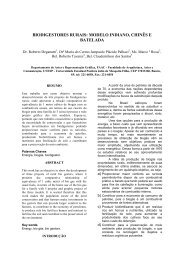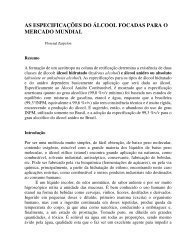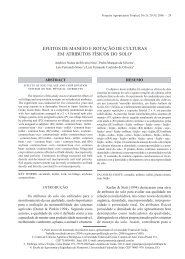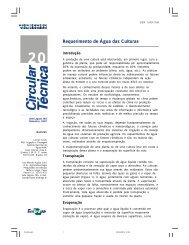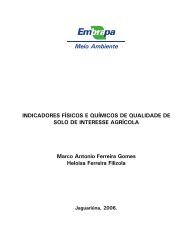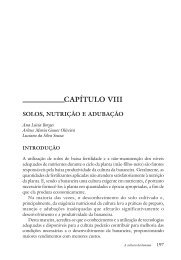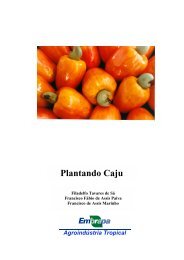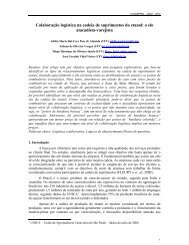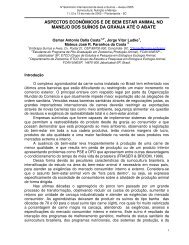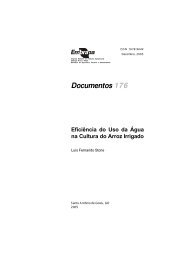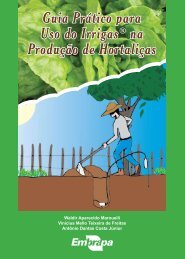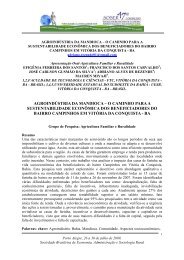PEDOGÊNESE E MATÉRIA ORGÂNICA DE SOLOS ...
PEDOGÊNESE E MATÉRIA ORGÂNICA DE SOLOS ...
PEDOGÊNESE E MATÉRIA ORGÂNICA DE SOLOS ...
You also want an ePaper? Increase the reach of your titles
YUMPU automatically turns print PDFs into web optimized ePapers that Google loves.
PADDY SOILS UN<strong>DE</strong>R DIFFERENT USES 1/<br />
Author: Luís de França da Silva Neto<br />
Advisor: Prof. Dr. Alberto Vasconcellos Inda Junior<br />
Co-advisor: Prof. Dr. Paulo César do Nascimento<br />
ABSTRACT<br />
Paddy soils of Porto Alegre region are intensively used in agriculture,<br />
showing social, economic and environmental importance. The aim of this work<br />
was study pedogenetic and management aspects of paddy soils by the<br />
evaluation of morphological, physical and chemical soil characteristics,<br />
structural composition and physical and chemical fractions of soil organic matter<br />
(SOM). We collected samples of six paddy soil profiles, four of these with two<br />
distinct use or management. In the first study we study morphological, physical<br />
and chemical soil characteristics, including sulfuric acid attack and iron oxides<br />
selective dissolutions. In the second study, were determined the total organic<br />
carbon (TOC), carbon of physical and chemical SOM fractions, and the<br />
structural composition and humification degree of SOM through laser induced<br />
fluorescence spectroscopy (LIF), Fourier transformed infra-red (FTIR) and solid<br />
state 13 C nuclear magnetic resonance spectroscopy ( 13 C NMR). Paddy soils<br />
showed differences due to pedogenetic and variations due to management<br />
processes. The high value of silt/clay, subsurface high activity clay and high ki<br />
indicated a low soil weathering degree. The pH, TOC, base saturation,<br />
hidromorfic degree and particle-size distribution were more sensible to soil<br />
management induced alterations, influencing the soil classification. The TOC<br />
content was inferior in intensive managed soils, constituting an impact in soil<br />
quality and environment. The SOM physical fractions distribution was altered by<br />
the soil management, with particulate organic carbon associated to rice<br />
cultivation. The SOM chemical fractions distribution showed humin<br />
predominance in all the soils, and low weight carbon and humic acids in<br />
intensive managed soils. The results showed great association of SOM<br />
structural aspects with pedogenesis. Within the same soil, different uses (cover<br />
crop, management system and fertilization practices) changed the structural<br />
composition of SOM. The humification degree evaluate by LIF and the index of<br />
decomposition by 13 C NMR varied according environment of soil, and were<br />
higher in intensive managed paddy soils.<br />
1/ Doctoral thesis in Soil Science. Programa de Pós-Graduação em Ciência do Solo,<br />
Faculdade de Agronomia, Universidade Federal do Rio Grande do Sul. Porto Alegre.<br />
(109 p.) September, 2010. Financial support by CAPES, CNPq and FAPERGS.<br />
vii



